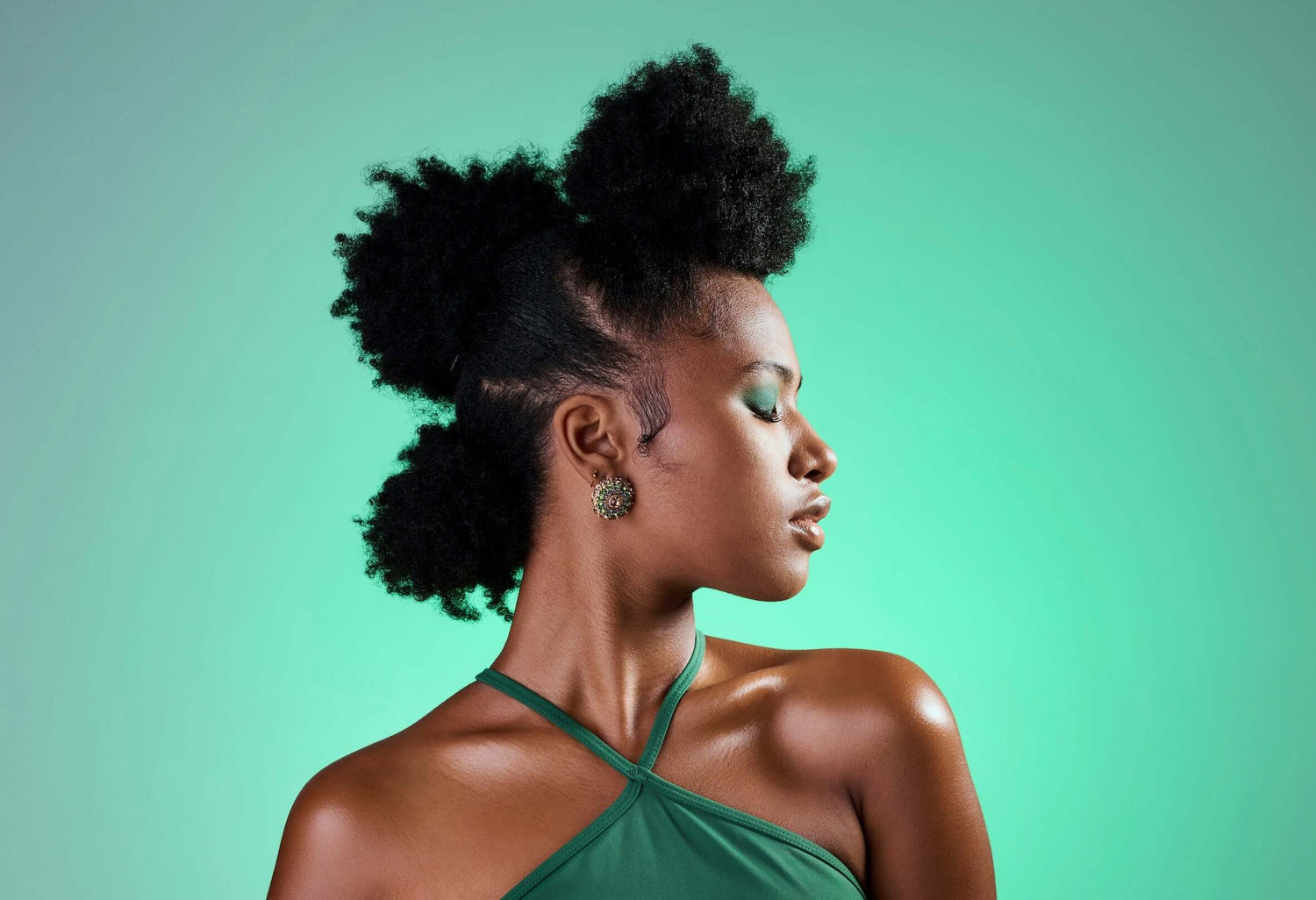Nurturing Your Coils: Guide to Afro Hair Care
Type 4 hair, also known as coily hair, is one of the finest and most delicate hair textures. If you have type 4 hair, understanding its nuances will help shape your hair care routine and make it easier and more effective. In this article, we will talk about the characteristics, subtypes, and care tips tailored specifically for type 4 hair, so keep reading!
What is Type 4 Hair
Type 4 hair is a distinctive curl pattern characterized by tight coils and zig-zag shapes. It is known for its fine strands and dense texture, and people who have type 4 hair often deal with challenges such as dryness, fragility, and shrinkage. The curl pattern of this hair type can range from crochet-needle size coils to 'Z' shaped patterns that make it voluminous.
Subcategories of Type 4 Hair:
- 4A Hair
4A hair is characterised by tight coils that have the width of a crochet needle. Closely resembling type 3 hair, these coils have a strong curl definition that makes them very visible. Despite the fact that it’s dense, 4A hair tends to retain moisture relatively well compared to other type 4 subtypes.
- 4B Hair
This one consists of densely packed 'Z' shaped coils that may be less visible at the roots but become more prominent towards the ends of the hair strands. Shrinkage is a common feature of 4B hair, and it causes it to look shorter than it really is. Due to its compact coil structure, 4B hair requires intense moisture to prevent dryness.
- 4C Hair
4C hair is the most delicate subtype within the type 4 category, featuring an extremely tight zig-zag pattern. Unlike 4A and 4B, it may be a little hard to see the curl pattern of 4C hair because of its compact nature. 4C hair also has the most significant shrinkage of all the subtypes and the most minimal curl definition.
And there’s also another layer when discussing coily hair types. Have hairdressers every referred to you having porous and non-porous hair and you have no idea what they are talking about? Allow us to summarise it for you:
Porous vs Non-Porous Hair
Hair porosity refers to the level of openness in the cuticle layer of your hair and determines how easily your hair absorbs and retains moisture. African hair, whether type 3 or 4, can either be porous or non-porous, and apart from knowing the subcategory your hair falls under, it’s also important to know your hair porosity so you can be better informed on how to take care of it. The characteristics we will mention below will help you identify the kind of porosity you have.
Non-Porous Hair
Non-porous hair is characterized by tightly overlapped cuticles that form a barrier that blocks moisture absorption. As a result, products you use in your hair tend to linger on the hair's surface instead of sinking through. It also takes longer for non-porous hair to fully wet and dry. This means lightweight and water-based products are better for porous hair. For non-porous hair, it might be a good idea to wet the hair slightly first then seal in moisture with an oil-based product. This might need to be done roughly 3-4 times a week depending on how often you expose your hair to the elements.
Porous Hair
On the other hand, porous hair is characterised by a more open cuticle, allowing for quick absorption of moisture. However, it struggles to retain it. This type of hair is more prone to dryness, frizz, breakage, and tangling, with a tendency to quickly become fully wet and absorb products rapidly. Thus, porous hair needs frequent hydration and moisture than non-porous hair. Moisturising your locks daily or every other day will help to keep your hair healthy and nourished
While genetics largely determine hair porosity, environmental factors and damage from heat or chemical treatments can increase porosity levels. However, where damaged, protein and hot oil treatments can help repair and return highly porous hair to its original state.
Caring For Your Type 4 Hair:
- Moisture is Key. Type 4 hair tends to be dry and prone to breakage, so you should incorporate moisturising products (leave-in conditioners and creams) into your routine to keep your curls well-hydrated and nourished.
- Use sulfate-free shampoos or co-washes to cleanse your hair so you don’t strip away its natural oils. Also, massage your scalp gently while washing to prevent tangling and minimize breakage.
- Detangle your hair with patience, using a wide-tooth comb or your fingers to work through knots and tangles. Start from the ends and work your way up to the roots, using a detangling conditioner to minimize breakage.
- Limit the use of harsh chemicals, such as relaxers and permanent dyes, as they can damage and weaken your curls over time.
- Protect your curls while you sleep by wrapping your hair in a silk scarf or using a silk pillowcase to prevent friction and minimize frizz. Our Sleep Beautiful Pillowcase Set is perfect for this.
- Trim your hair every few months to remove split ends and prevent breakage.
By incorporating these care tips into your hair care routine, you’ll be able to keep your type 4 curls healthy and hydrated. Remember, there is nothing wrong with experimenting with different products and techniques to discover what works best for your hair.

